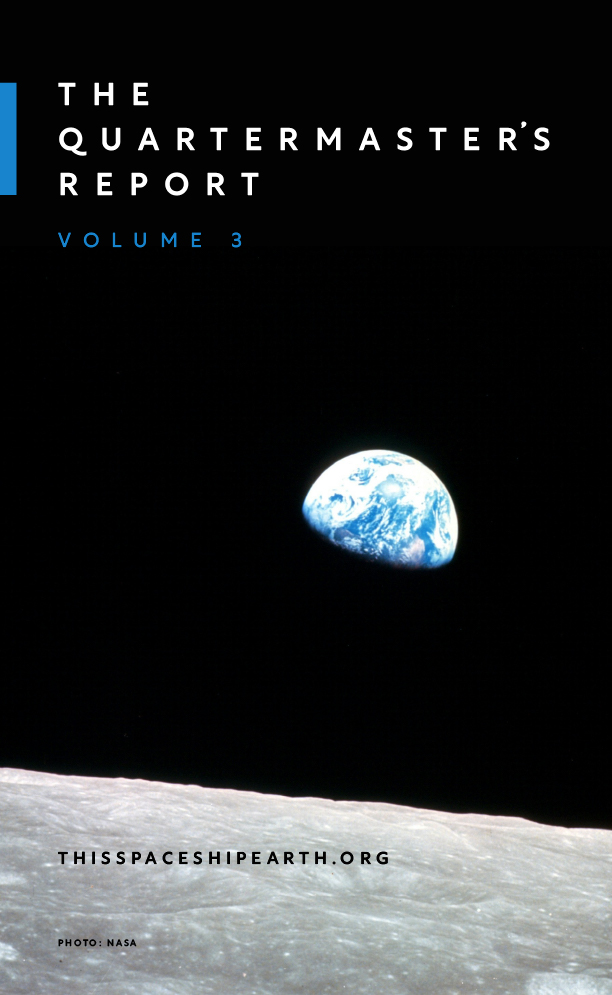The Quartermaster’s Report – Volume 3
Download this latest Quartermaster’s Report (QMR) today. The first QMR was published in the book “This Spaceship Earth” in 2015. The second QMR was published in “Now That You Know”, an eBook published in 2023 with the support of Origina. The changes in the data were so stark over that eight year time span, we decided we must publish more frequently so people can see the acceleration that is occurring in most of the several hundred data points we are tracking. So This Spaceship Earth has committed to publishing a QMR every six months. More frequently than that would be beyond our bandwidth.
QMR Volume 4 will be published in October 2024.
Fill out the form below and you will receive an email from This Spaceship Earth that links to downloads of a PDF or an ePUB version of the book. If you don’t receive the downloads, check your spam folder or add This Spaceship Earth as an approved email sender.


